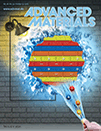 A materials journal has retracted two 2013 papers, citing an investigation at Pennsylvania State University that concluded the first author falsified data.
A materials journal has retracted two 2013 papers, citing an investigation at Pennsylvania State University that concluded the first author falsified data.
According to the retraction notice in Advanced Materials, Mehdi Ghaffari — formerly based at Penn State — was solely responsible for the misconduct. Ghaffari’s LinkedIn page says he finished his PhD at Penn State in 2014, and now works as an independent consultant in New York, after a stint as a postdoc at Procter and Gamble.
A Penn State spokesperson sent us this statement:
The researcher in question is no longer at Penn State. We can not comment further on this matter.
Here’s the retraction notice for both papers, issued earlier this month:
These articles first published on 15 August 2013 and 21 August 2013 on the Wiley Online Library have been retracted at the request of the Research Integrity Officer (RIO) of The Pennsylvania State University, in agreement with the corresponding authors, the journal’s Editor-in-Chief, and Wiley-VCH Verlag GmbH & Co. KGaA, because portions of the reported results cannot be considered reliable or reproducible.
Following an investigation by the RIO of The Pennsylvania State University, it was found that the data in Figure 2a,b and Figure S1a,b (Supporting Information) of the article with DOI: 10.1002/adma.201301243, and Figure S3 (Supporting Information) of the article with DOI: 10.1002/adma.201301370 were falsified. Data regarding the carbon electrode material, A-aMEGO, reported to have a density of 1.15 g cm−3, in the article with DOI: 10.1002/adma.201301243, were falsified.
The RIO of The Pennsylvania State University confirms that the investigation found that the mentioned data were falsified by the first author. No findings of research misconduct were made against the co-authors of these publications.
One of the papers, “High-Volumetric Performance Aligned Nano-Porous Microwave Exfoliated Graphite Oxide-based Electrochemical Capacitors,” has been cited 50 times, according to Clarivate Analytics’ Web of Science, formerly part of Thomson Reuters.
The other study, “Aligned Nano-Porous Microwave Exfoliated Graphite Oxide Ionic Actuators with High Strain and Elastic Energy Density,” has accumulated five citations.
The study’s last and corresponding author from Penn State, Qiming Zhang, declined to comment on the situation, referring us to university officials.
Candice Yekel, Penn State’s RIO and Associate Vice President for Research Director, Research Protections, declined to provide the investigation report or comment on the case, citing institutional policies.
We were unable to find current contact details for Ghaffari.
Hat tip: Daniel Balazs
Like Retraction Watch? Consider making a tax-deductible contribution to support our growth. You can also follow us on Twitter, like us on Facebook, add us to your RSS reader, sign up on our homepage for an email every time there’s a new post, or subscribe to our daily digest. Click here to review our Comments Policy. For a sneak peek at what we’re working on, click here.